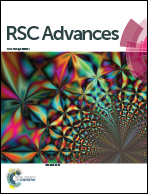Optimization of electrochemical parameters for sulfate-reducing bacteria (SRB) based biocathode
Abstract
This study focuses on the effect of operational and physiochemical factors on a stable sulfate reducing bacteria biocathode and their effect on the electrochemical response thereof. Two carbon-based electrode materials i.e. VITO CORE™ and Paxitech® electrodes were evaluated. The electrochemical performance was assessed by changing both organic and inorganic components of the synthetic feed, which included carbon substrates (acetic and butyric acid), ionic strength (concentration of sodium chloride) and weak electrolytes acting as buffering agents (potassium dihydrogen phosphate and ammonium chloride). The concentration of sodium chloride (0.34 M) and acetate (0.1 M) plays a crucial role in determining the performance as well as the bioelectrochemical mechanism of the sulfate reducing bacteria (SRB) biocathode. Butyrate did not significantly influence the performance of the biocathode but showed a synergistic effect when given along with acetate. The developed biocathode was also successfully tested for dark fermentation based effluent treatment application. Concentrations higher than 10% of effluent were found to be detrimental to the electrochemical performance of the biocathode. This study essentially highlights the significance of optimization studies on bioelectrochemical system (BES) at lab scale before its potential upscaling for industrial wastewater processing.


 Please wait while we load your content...
Please wait while we load your content...